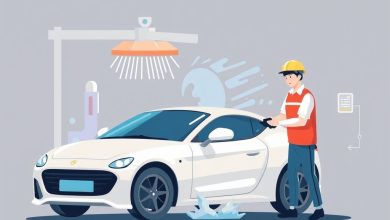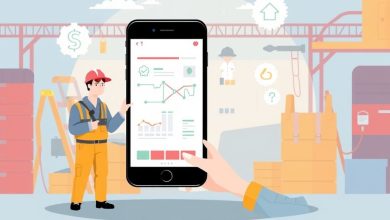Field Service Management with IoT Sensor Integration Revolutionizing Operations

Introduction
Field Service Management (FSM) is a crucial aspect of modern business operations, particularly in industries such as HVAC, electrical work, plumbing, and home maintenance. Traditionally, FSM relied heavily on manual processes and limited technological tools. However, the integration of Internet of Things (IoT) sensors has revolutionized this sector, enabling more efficient, cost-effective, and customer-centric services.
- The Evolution of Field Service Management
- The Role of IoT Sensors in Field Service Management
- Benefits of IoT Sensor Integration in Field Service Management
- Implementing IoT Sensors in Field Service Operations
- Case Studies: Successful Implementation of IoT Sensors in FSM
- Example 1: HVAC Company Reduces Downtime by 30%
- Example 2: Electrical Contractor Improves Safety and Efficiency
- Challenges and Considerations in IoT Sensor Integration
- Future Trends in IoT Sensor Integration for Field Service Management
- Conclusion
The Evolution of Field Service Management
Field Service Management has undergone significant transformations since its inception. From paper-based scheduling systems to advanced software solutions, the industry has continuously adapted to technological advancements. The incorporation of IoT sensors represents the latest milestone in this journey, promising unprecedented levels of automation and data-driven decision-making.
Challenges in Traditional FSM
Before the advent of IoT technology, field service management faced several challenges:
- Inefficient scheduling and resource allocation
- Limited visibility into job status and progress
- Difficulty in predicting equipment failures
- Manual data entry leading to errors and delays
- Lack of real-time communication between technicians and dispatchers
These challenges often resulted in increased operational costs, reduced customer satisfaction, and decreased overall efficiency.
The Role of IoT Sensors in Field Service Management
IoT sensors have emerged as a game-changer in the field service management landscape. These small, connected devices can be installed in various locations, including customer premises, vehicles, and equipment. They collect vast amounts of data, which is then transmitted to cloud-based platforms for analysis and action.
Types of IoT Sensors Used in FSM
- Environmental Sensors: Monitor temperature, humidity, and other environmental factors
- Equipment Sensors: Track vital signs of machinery and appliances
- Location Sensors: Provide real-time tracking of vehicles and personnel
- Motion Sensors: Detect movement and activity patterns
- Vibration Sensors: Identify potential equipment failures before they occur
Benefits of IoT Sensor Integration in Field Service Management
The integration of IoT sensors offers numerous advantages to field service organizations:
- Improved Scheduling Accuracy: Real-time data allows for more precise scheduling and resource allocation
- Enhanced Predictive Maintenance: Early detection of equipment issues reduces downtime and extends asset lifespan
- Increased Customer Satisfaction: Faster response times and more accurate diagnoses lead to higher customer satisfaction
- Reduced Operational Costs: Minimized travel time, improved route optimization, and extended equipment life contribute to lower expenses
- Data-Driven Decision Making: Access to comprehensive insights enables better strategic planning and process improvements
Implementing IoT Sensors in Field Service Operations
Implementing IoT sensors in field service operations requires careful consideration of several factors:
- Choose the right sensors: Select devices that align with specific business needs and integrate seamlessly with existing systems
- Ensure robust connectivity: Invest in reliable network infrastructure to support sensor data transmission
- Develop a secure data management system: Protect sensitive information while ensuring easy access for authorized personnel
- Train staff: Educate technicians and dispatchers on how to interpret and act upon sensor data
- Regularly update and maintain: Keep systems current and functioning optimally
Case Studies: Successful Implementation of IoT Sensors in FSM
Several companies have successfully implemented IoT sensors in their field service operations, resulting in significant improvements:
Example 1: HVAC Company Reduces Downtime by 30%
A large HVAC company deployed IoT sensors in residential units to monitor temperature, humidity, and air quality. This allowed them to:
- Predict equipment failures before they occurred
- Schedule maintenance proactively
- Reduce emergency calls by 25%
- Increase first-time fix rates from 60% to 85%
Example 2: Electrical Contractor Improves Safety and Efficiency
An electrical contractor integrated IoT sensors in their vehicles and equipment. This led to:
- Real-time monitoring of vehicle location and condition
- Automatic alerts for potential safety hazards
- Optimized routing based on job proximity
- Reduction in fuel consumption by 15%
Challenges and Considerations in IoT Sensor Integration
While IoT sensors offer numerous benefits, there are also challenges to consider:
- Initial Investment: The cost of implementing and maintaining IoT systems can be substantial
- Data Privacy Concerns: Ensuring the security and privacy of collected data is paramount
- Technological Complexity: Integrating IoT systems may require significant IT expertise
- Potential for Overreliance: Relying too heavily on technology might lead to complacency among human technicians
Future Trends in IoT Sensor Integration for Field Service Management
As technology continues to evolve, we can expect further innovations in IoT sensor integration for field service management:
- Artificial Intelligence Integration: AI-powered predictive analytics will become more prevalent
- Edge Computing: Processing data closer to the source will reduce latency and improve real-time decision making
- Augmented Reality: AR technologies will enhance remote diagnostics and training capabilities
- Blockchain: Secure, decentralized data storage will address growing concerns about data privacy and security
Conclusion
The integration of IoT sensors in Field Service Management represents a significant leap forward in operational efficiency and customer satisfaction. By leveraging the power of connected devices, businesses can transform their approach to service delivery, creating more streamlined, responsive, and cost-effective operations.
As the technology continues to mature, it’s essential for field service managers to stay informed about the latest developments and adapt their strategies accordingly. Embracing IoT sensor integration not only enhances competitiveness but also sets the stage for even more innovative solutions in the future of field service management.
By embracing this technology, businesses can position themselves at the forefront of industry innovation, ensuring they remain relevant and competitive in an increasingly digital landscape.




